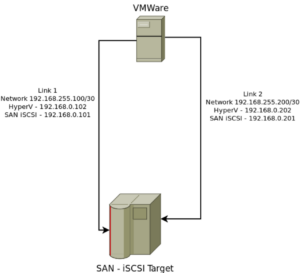Fibre channel or Fiber Channel is also another way to present SCSI devices over a network medium using a complete different protocol suite then my previous article on iSCSI. With Fiber Channel transfer speeds and protocol delivery is much faster than iSCSI. The fundamental difference between the two is iSCSI uses TCP/IP protocol suite to deliver SCSI messages, and Fiber Channel uses Fiber channel to deliver SCSI message. This means that you will have to have network equipment that is Fiber Channel capable, such as Fiber Channel switches, Fiber Channel HBA (similar to TCP/IP NICs), etc. For the purposes of this article I will not go into how Fiber Channel works, or how it does it’s job of delivering SCSI messages two and from SCSI initiators and SCSI targets. This article will step through how to turn a Linux machine into a Fiber channel SCSI Target. There are a few things you will need to even attempt this:
- A Linux machine running Kernel 3.2+
- SCST and SCSTAdmin (see below steps)
- A separate machine that will act as a Fiber channel initiator, this can be another Linux machine, or an ESX host, etc
- At least two(2) Fiber channel HBA’s with one physical WWN port each installed in both machines
- A OM2 or 3 Multi-mode Fiber cable with connectors capable of being used with the HBAs
- Enough disk space to create a Virtual Disk so we may present it as a LUN
- And lastly, some excitement!! you are about to enter the new world of Fiber Channel!!
